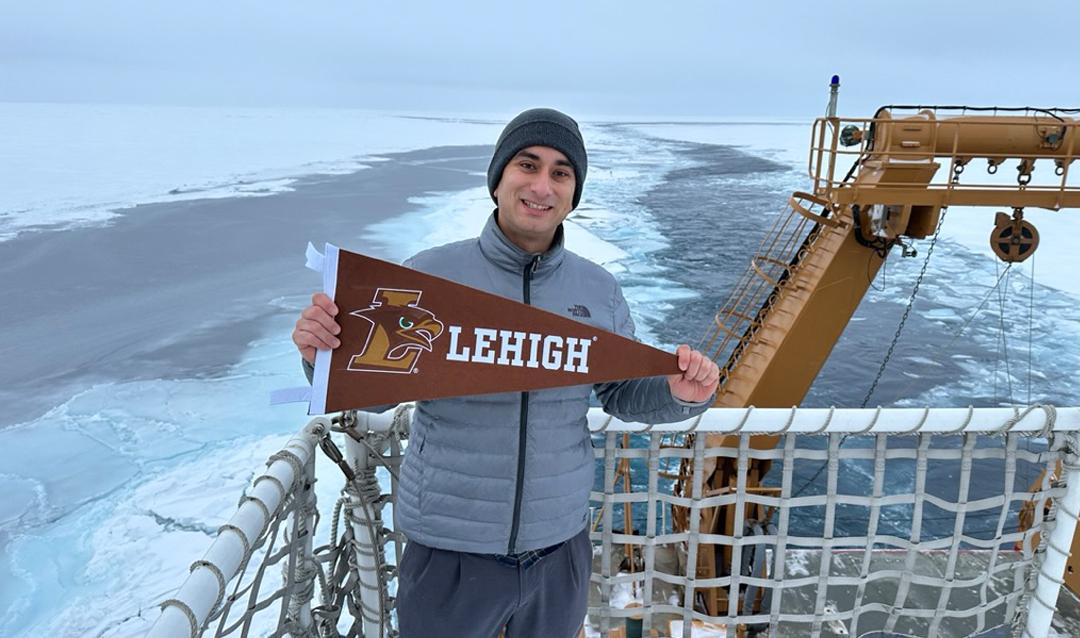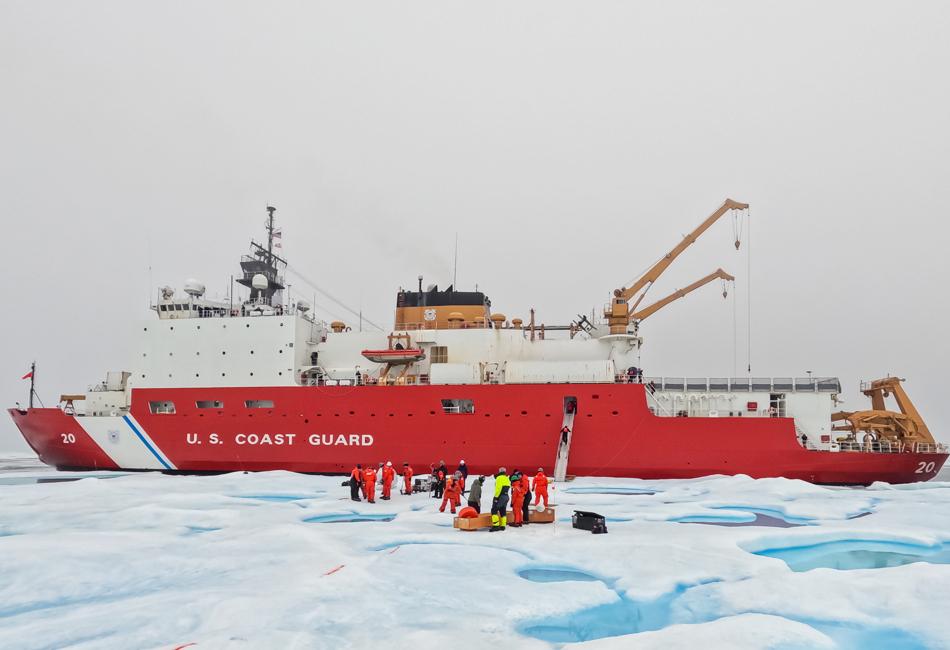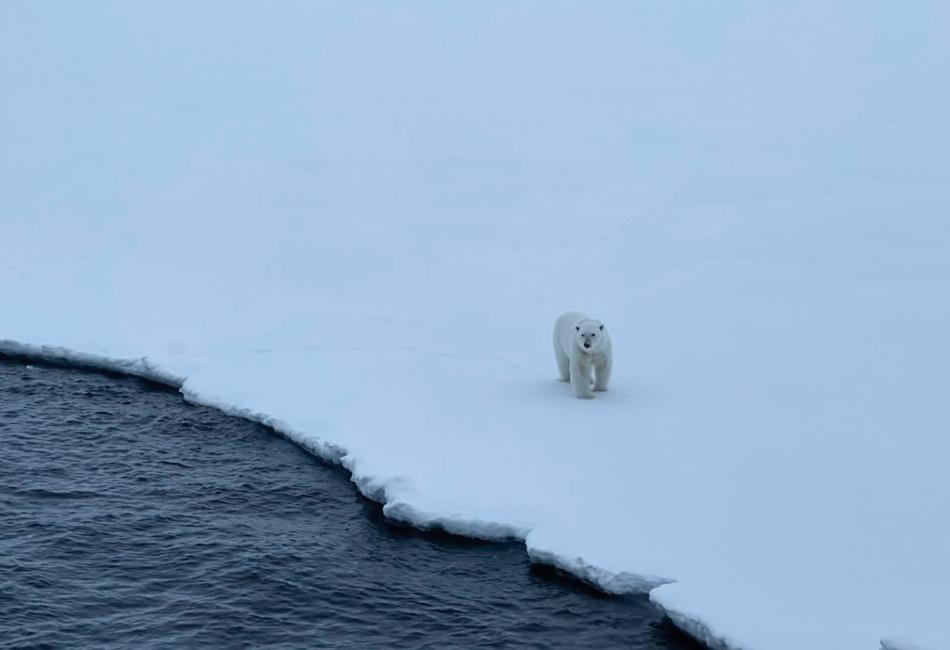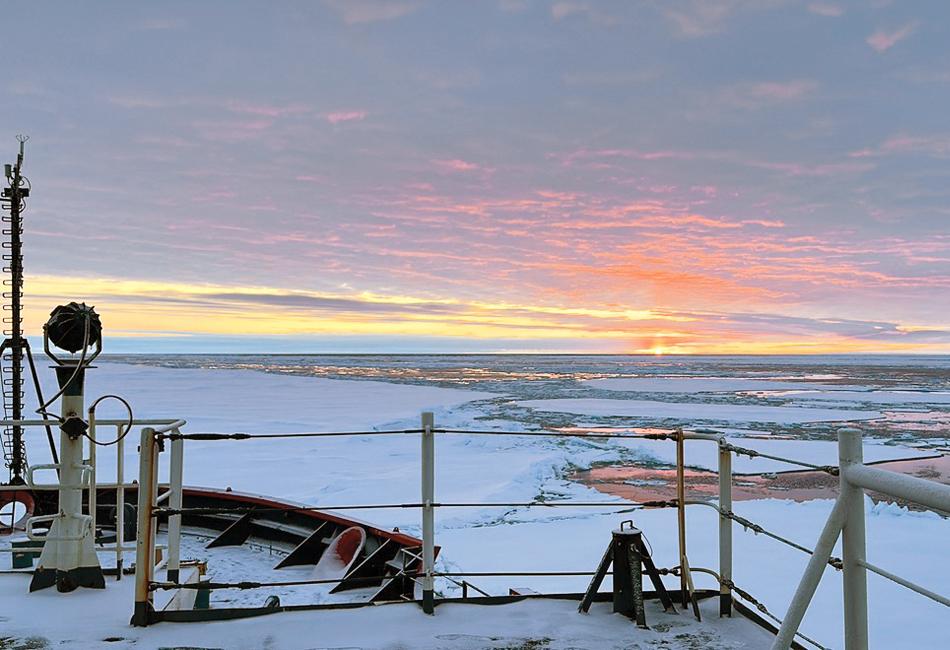A funny thing happened to Eugene Vivino ’16 on the day his landlord’s birds flew away.
A woman who was helping to locate them was wearing a jacket with a logo that caught Vivino’s attention: Scripps Institution of Oceanography. And, she told him, Scripps, a center for ocean and Earth science research in La Jolla, California, was hiring.
Then a systems analyst at Northrop Grumman working to support Department of Defense research labs, and with a degree in Earth and environmental sciences from Lehigh, Vivino decided to send in a resume. He secured a job with Scripps as a systems analyst, providing comprehensive IT services to research ships around the clock as part of the Ship Cyber Infrastructure Services (ShipCIS) team to ensure they are working at their best and protected from digital threats.
The job has taken him to remote spots around the world, including the volcanic island of Mauritius, destinations in Europe, the sea off the coast of California, and far above the Arctic Circle aboard the U.S. Coast Guard Cutter Healy to collect data and investigate the condition of the Arctic—a mission, Vivino said, that will help shape the world’s understanding of the Arctic at a critical point in history.
Also a member of the Ship-based Technical Support in the Arctic (STARC) team, Vivino said he helped conduct sample collection and provide technical support for many data acquisition systems that enabled the science to happen. On board the icebreaking vessel were also researchers from the National Science Foundation and International Arctic Research Center as a part of the NABOS 2023 Cruise that left from Kodiak, Alaska, sailed through the Arctic, and arrived in Tromsø, Norway, over the span of 38 days.
“It felt like I was getting to serve my country and felt like I was getting to do good in the world,” said Vivino, who called the month-long expedition “the trip of a lifetime.”
Collecting Valuable Data
Vivino and the team worked continuously to collect valuable data, including water column samples, temperature and salinity readings, compositional analyses, current measurements, seafloor mappings and more. This work is significant, Vivino said, because it provides some of the only first-hand measurements of the Arctic's climatic transformation, guiding an understanding of global environmental changes.
It was the stark beauty of the Arctic that stood out to him, however. He recalled the blue of the ice under the surface of the water and the many types of wildlife encountered, including polar bears and their cubs, birds, whales, fish, seals and arctic foxes. He said the colors were ethereal and pastel-like, and he got a chance to see the northern lights. Due to the mission’s extremely high latitude, the sun almost never set for much of the cruise.
“The most interesting thing to me was being in a place where it was ice as far as you could see,” Vivino said. “It looked like you were on a different planet. … It struck me somewhere deep down because of how beautiful it was.”








